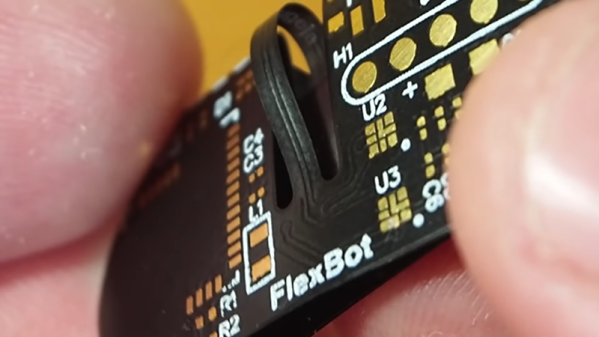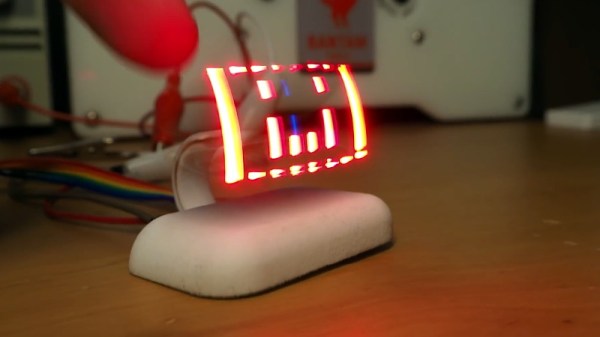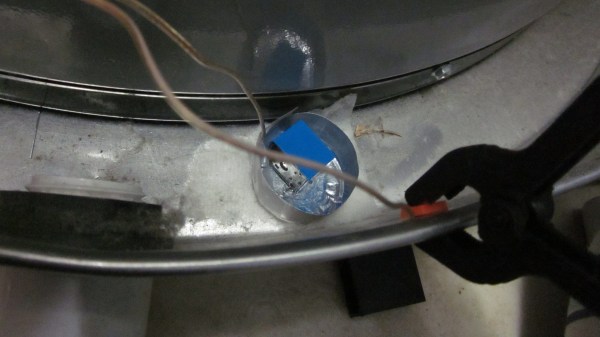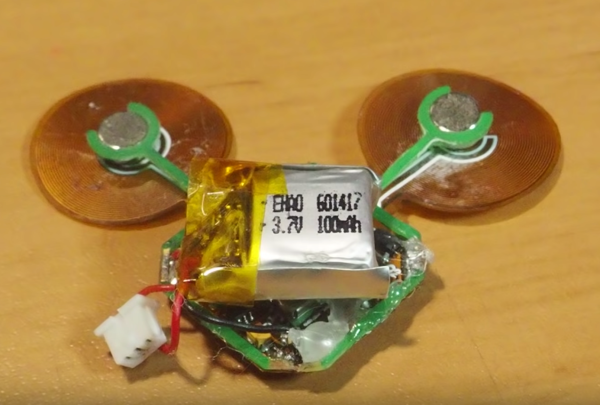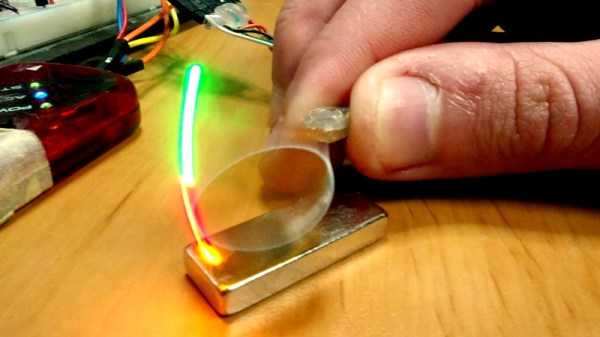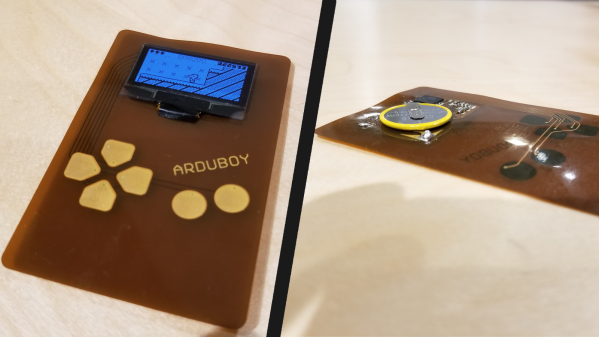With his FlexLED project, [Carl Bugeja] is trying to perfect a simple and affordable persistence of vision (POV) display capable of generating “holographic” characters in mid-air. Traditionally POV systems spin LEDs rapidly to create the desired illusion, but that means motors, slip rings, and noise. As the name implies, the goal with this project is to do away with all that and replace it with a self-actuating flexible PCB.
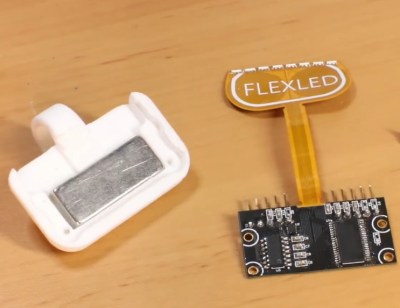 The device is able to quickly move the LEDs back and forth quietly and efficiently thanks to a permanent magnet and magnetic coils integrated into the flexible PCB. With no motors or gears, the whole unit is smaller and less complex than other POV displays. As an added bonus, there’s no danger to the operator or the device should a curious user stick their finger into it.
The device is able to quickly move the LEDs back and forth quietly and efficiently thanks to a permanent magnet and magnetic coils integrated into the flexible PCB. With no motors or gears, the whole unit is smaller and less complex than other POV displays. As an added bonus, there’s no danger to the operator or the device should a curious user stick their finger into it.
The last time we took a look at this project, [Carl] had entered an earlier single-LED version into the 2019 Hackaday Prize. Competition was tough last year, and unfortunately FlexLED didn’t get selected as a Finalist. But we’re still extremely interested in seeing the project develop, and we imagine so are you.
The recently completed second version of the display features an improved coil design, eight RGB LEDs and a 3D printed base with integrated magnet. With more LEDs onboard, a single display is able to show multiple characters and even rudimentary animations. A large array of these flapping elements promises to be quite a sight.
But before you get too excited, [Carl] does have some bad news. For one, the cost of building them in small quantities is high, which is always tough for a single hacker trying to iterate a design. Worse, some of the LEDs seem to have died on this prototype already. He says it likely has something to do with the stress of flexing back and forth so quickly, which is obviously a bit troubling. He’s looking to get some feedback from the community, and is hoping to address these issues in the next version.
For an interesting look into his flexible PCB actuator projects, check out the interview [Carl] did with us at the 2018 Hackaday Superconference.
Continue reading “Latest FlexLED Milestone Refines The POV Display” →

